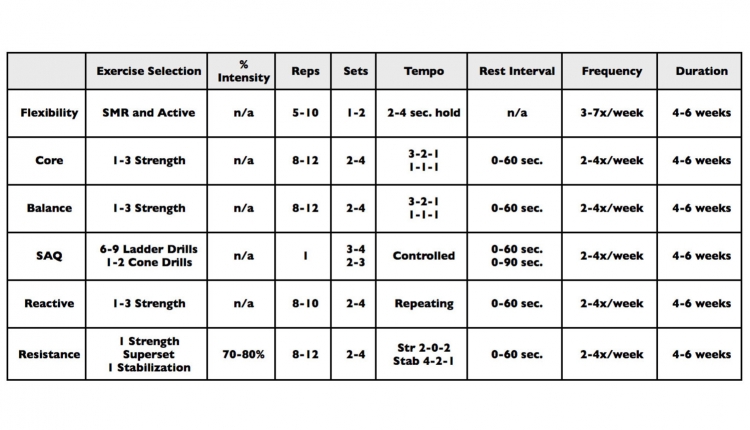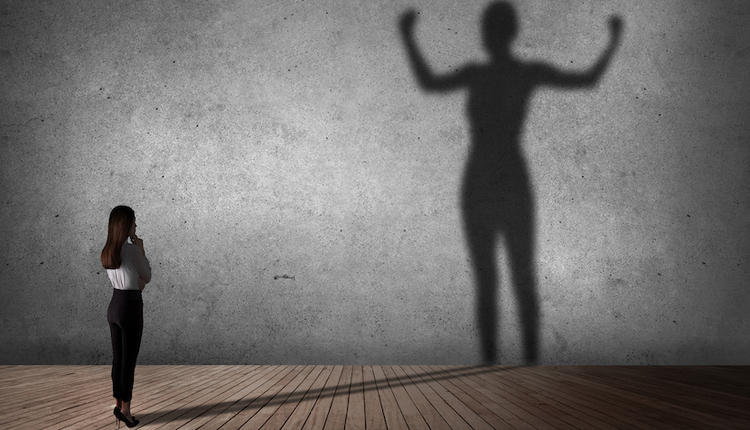Just for a minute, think back to when you were just learning the skeletal and the muscular systems. You may have been in college and enrolled in an anatomy class or just received your personal trainer exam text book in the mail. I remember thinking this is going to take me forever to remember 200-plus bones and 600-plus muscles, and then to apply this knowledge to posture and movement; yikes!
Well it goes without saying I conquered this task with flying colors, but all of the hours and anxiety could have been minimized if I would have just gotten on board the "Anatomy Train" (Meyers, 2009). Sidenote: When I started in my career this information was not available. My goal for you is to embrace the simplicity of the human body and its magnificence all at the same time. I will explain to you how to visualize, understand and apply this knowledge using myofascial lines instead of trying to look at it all as individual and isolated muscles and bones. In other words, it's viewing the body and movement from a global view.
The concept of Anatomy Trains came from those who were teaching myofascial anatomy to groups of "alternative" therapists including structural integration practitioners, massage therapists, osteopaths, midwives, dancers, yoga teachers physiotherapists and athletic trainers in the US, UK and Europe. Now Anatomy Trains fills a current need for a global view of human structure and movement. Aesthetically, it allows us to have a more 3D "feel" for the musculoskeletal anatomy and appreciation of whole-body movement patterns, how we function and how compensation patterns occur in daily life. Clinically, it leads to having an understanding of how painful problems in one area of the body can be linked to other areas in the body.
The Lines Defined:
The superficial back line (SBL) connects and protects the entire posterior surface of the body like a sheet from the bottom of the foot to the top of the head in two pieces - toes to knees, and knees to brow. When the knees are extended, as in standing, the SBL can be dissected as a unit, both on its own and laid over a plastic classroom skeleton.
The superficial front line (SFL) connects the entire anterior surface of the body from the top of the feet to the side of the skull in two pieces - toes to pelvis and pelvis to head which when the hip is extended as in standing, function as one continuous line of integrated myofascia.
The lateral line (LL) brackets each side of the body from the medial and lateral mid-point of the foot around the outside of the ankle and up the lateral aspect of the leg and thigh, passing along the trunk in a 'basket weave' of shoelace pattern under the shoulder to the skull in the region of the ear.
The spiral line (SL) loops around the body in a double helix, joining each side of the skull across the upper back to the opposite shoulder, and then around the ribs to across in the front at the level of the navel to the same hip. From the hip, the spiral Line passes like a jump rope along the anterolateral thigh and shin to the medial longitudinal arch, passing under the foot and running up the back and outside of the leg to the ischium and into the erector myofascia to end very close to where it started on the skull.
The four arm lines (FAL) run from the axial skeleton to the four quadrants of the arm and four sides of the hand, namely the thumb, little finger, palm, and back of the hand. We could assume that these lines are neat and symmetrical but, the arm lines display a more crossover myofascial linkages among these longitudinal continuities than do the corresponding lines in the legs. Because the human shoulder and arms are specialized for mobility compared to those of our more stable legs. These multiple degrees of freedom require more variable lines of control and stabilization and more inter-line links. The arms are quite logically arranged with a deep and superficial line along the front of the arm, and a deep and superficial line along the back of the arm.
The functional lines (FL) extend the arm lines across the surface of the trunk to the contralateral pelvis and leg. More descriptively they run up from the leg to the pelvis across the opposite rib cage, shoulder and arm, since our meridians run in either direction. These lines are called the functional lines because they are rarely employed, as the other lines are, in modulating standing posture. They come into play primarily during athletic or other activity where one appendicular complex is stabilized, counterbalanced or powered by its contralateral complement.
The deep front line (DFL) comprises the body's myofascial core. Beginning from the bottom for convenience, the line starts deep in the underside of the foot, passing up just behind the bones of the lower leg and behind the knee to the inside of the thigh. From here the major track passes in front of the hip joint, pelvis, and lumbar spine, while an alternate track passes up the back of the thigh to the pelvic floor and rejoins the first at the lumbar spine. From the psoas-diaphragm interface, the DFL continues up through the rib cage along several alternate paths around and through the thoracic viscera, ending on the underside of both the neuro and viscerocranium. It is important to know that the DFL should be thought of as a 3D space rather than a line. The DFL occupies space in the leg, through the pelvis and has a direct relationship with the "wave" of breathing and the rhythm of walking to each other.
(For more information follow the link to http://www.youtube.com/watch?v=LTt1DN3ozAs and find Thomas Myers Anatomy Trains, second edition, Myofascial Meridians for Manual and Movement Therapists book on the web at http://www.anatomytrains.com/at/)
Now that you are visualizing the human body as train cars that are connected instead of individual cars and understand more completely how what happens at the bottom of the foot can give you a headache. Let's look at how these lines function in motion we are likely to see in sport.
Lines in sport:
Visualize the final moment of follow-through from a drive in golf, performed by a right-handed individual. We can think of this as having a picture of integrated helical lines. The entire upper part of the right spiral line, from the right side of the head around the left shoulder and ribs to the right hip and into the right arch is evenly stretched; except for the head which must counter rotate to follow the path of the ball. This then will lead to the left SL being contracted through to the supinating left foot. For the front-back balance the superficial front line is opened and stretched with the superficial back line being shortened creating a bow to the body and therefore providing the flow for the spiral lines. Now visualize an outfielder in baseball diving for a catch with body extended horizontally, right arm extended towards the ground at shoulder level, but not making much ground contact and the left arm extended overhead making the catch. The left arm making the catch is using almost exclusively the superficial front arm line. The superficial back line is shortened by the leap with the head, spine, and right hip being in a hyperextended position. The superficial front line ensuring that the hyperextension stays in control by keeping the ribs engaged with the pelvis. The right arm not having much contact with the ground has an important role in keeping the player orientated with the ground and the ball. To turn the ribs toward the ball the left spiral line must shorten while the right spiral line is lengthening to allow the left arm to come up in the air. The right front functional line has a role of assisting the SFL in stabilizing the front, and the left FFL is stretching to allow the arm to get up. The left back functional line is contracting to extend the arm working off of the extended right leg.
I do understand that at first read this all seems very complex and overwhelming. Trust me when I ask you to go back reread each portion, stand in front of a mirror and visualize these lines in your own body then reread the line description portion of the article. Next, take pen to paper and draw the lines out on the various drawings of the human body in the frontal, side and posterior view. Now reread the lines in sport portion of the article. After doing this it all should be a bit clearer. The main goal in learning the functional lines of the human body is to assist you in understanding human function, dysfunction, and postural assessments (static and dynamic).
References: Meyers, Thomas W, Anatomy Trains Second Edition, Myofascial Meridians for Manual and Movement Therapists. Churchill Livingstone Elsevier, 2009
Valorie Ness is CEO of Catalyst Fitness Midtown located in Atlanta, Georgia. She has been in the industry for over 15 years and travels nationally and internationally as an educator and presenter. Valorie is the 2013 PFP Trainer of the Year, master trainer for ACE, Red Cord and Catalyst Fitness. www.catalystfitness.com
Related to:
Aug. 10 2013














